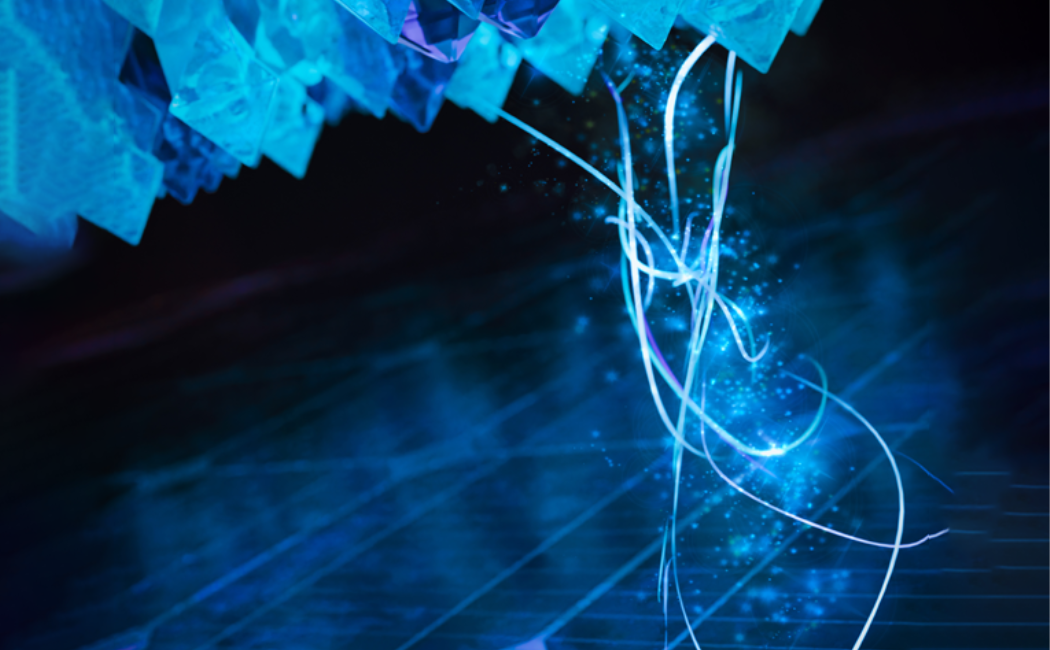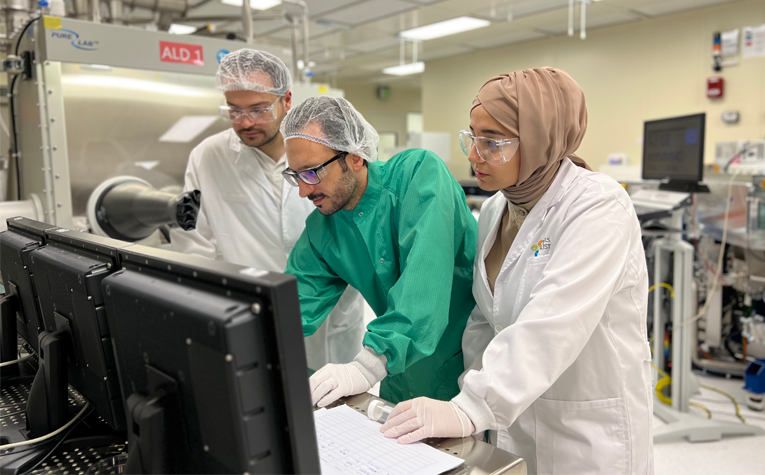
06 December, 2023
KAUST scientists have developed a highly efficient tandem solar cell by optimizing the connection between silicon and perovskite layers. © Hassan Tahini; 2023 KAUST.
A tandem solar cell shown to be one of the most efficient at converting incoming optical power to electrical power has been developed by focusing on the connection between the silicon and the perovskite layersarticle. " id="return-reference-1" href="https://discovery.kaust.edu.sa/en/article/23026/k-2/#reference-1">[1].
Silicon is established as the dominant material in solar cell production because it has excellent electronic properties, is a good absorber of light, is nontoxic and is found in abundance in the Earth’s crust, which makes it relatively cheap. However, for better utilization of sunlight, perovskites have emerged as a top cell for tandem applications that promise affordable higher power conversion efficiency.
Perovskites are a broad family of materials typically comprising a mix of organic and inorganic components. These solar cells have already demonstrated very high efficiencies, are composed of low-cost materials and are simple to process. And, most importantly, as many perovskite materials exist, so their composition can be selected to optimize absorption at specific wavelengths of light. This raises the intriguing and promising prospect of combining the more mature silicon technology with more versatile perovskites.

From left, Bumin K. Yildirim, Erkan Aydin and Esma Ugur. The researchers introduced an ultrathin film of amorphous indium zinc oxide to create a reliable connection between silicon and perovskite layers in tandem solar cells. © 2023 KAUST.
“The most successful two-junction monolithic tandem solar cells to date involve a compromise where a top perovskite cell is electrically connected to a bottom silicon cell,” explains Erkan Aydin, who led the project subteam that included Esma Ugur, Bumin K. Yildirim and colleagues from De Wolf’s group. “The best examples of this technology frequently utilize a self-assembled monolayer on a layer of optically transparent, yet electrically conductive, oxide material; however, establishing this layer stack efficiently and reproducibly poses a substantial challenge.”
Read more at KAUST Discovery.